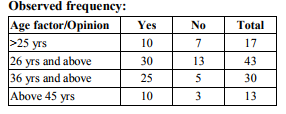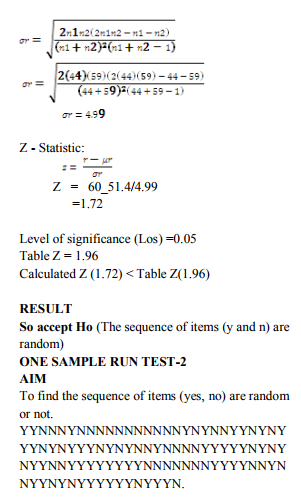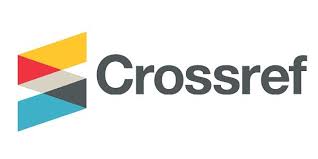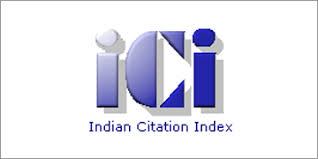IJCRR - 4(20), October, 2012
Pages: 01-06
Date of Publication: 20-Oct-2012
Print Article
Download XML Download PDF
EFFECTIVENESS OF MENTORING IN NEYVELI LIGNITE CORPORATION (NLC)
Author: S.Chandrasekar
Category: General Sciences
Abstract:Mentoring consist of establishing formal relationships between junior and the senior colleagues. The main objective is to find the opinion and their satisfaction level in the mentoring relationship. The type of research design used is descriptive in nature and the required data has been generated using a research instrument called the questionnaire to a sample of 103 employees. Convenience sampling procedure is used in this survey. The structured questionnaire consists of open ended like multiple choice questions, close ended, etc. The period of study is for three months. The collected data has been+ analyzed using various statistical tools like, one sample run test, chi square test. From the survey it is found that the mentoring program is effective in the organization and the relationship is excellent
Full Text:
INTRODUCTION
Coaching and mentoring are learning relationships which help people to take charge of their own development, to release their potential and to achieve results which they value .Mentors are people who, through their action and work, help others to achieve their potential. The success of coaching and mentoring is in the establishment of an effective relationship, based upon mutual respect, honesty and understanding. A mentor doesn’t necessarily have to be someone senior to you in the organisation, but rather needs to have the motivation and training to support you (the mentee) in your development. It goes without saying that other qualities such as a varied career and life experience, a wide professional network and commitment to their own development will enrich the mentoring relationship. A mentor does not give advice, rather helps the mentee to weigh up situations, through a process of reflection, questions, challenge and feedback allowing the mentee to come to a decision themselves. It is crucial to remember that in any mentoring relationship it is the mentee who drives the agenda, not the mentor. Objectives of the Study
- To find the factors influencing the mentoring program.
- To find the effect of the employees after the mentoring program.
RESEARCH METHODOLOGY
Descriptive Research
Descriptive studies are undertaken in many circumstances. When the research is interested in knowing the characteristic of certain groups such as age, sex, education level, occupation or income, a descriptive study may be necessary. Target Repondents A population can be defined as including all people or items with the characteristic one wish to understand. Because there is very rarely enough time or money to gather information from everyone or everything in a population, the goal becomes finding a representative sample (or subset) of that population.
LIMITATIONS
- Due to confidential nature of their concern respondents in many cases were unwilling to provide all the information, so the same information may be accessed.
- Analyzing data consumes more time.
- The study is limited to errors which might have occurred unknowingly.
PROPOSED SAMPLING METHODS
Convenience sampling is used in descriptive research where the researcher is interested in getting an inexpensive approximation of the truth. As the name implies, the sample is selected because they are convenient. This non probability method is often used during preliminary research efforts to get a gross estimate of the results, without incurring the cost or time required to select a random sample.
DATA PROCESSING
Primary Sources Primary data are those collected specifically for the purpose of the study under consideration .It is more direct source of information. The primary data collection considered in the study of this project is questionnaire method along with survey method. Secondary Sources Secondary data means data that are already available i.e. It refer to the data which have already been collected and analyzed by someone else.
TOOLS FOR ANALYSIS
CHI-SQUARE TEST-1
AIM:
To find there is any relationship between Age and the Career development


RESULT
So reject Ho, accept H1. There is significant relationship between age and career development.
CHI-SQUARE TEST-2
AIM
- To find the relationship between the experience and the job satisfaction after the mentoring program.


HYPOTHESIS
Null hypothesis (Ho):
- There is no significant relationship between experience and the job satisfaction. Alternative hypothesis (H1):
- There is some significant relationship between experience and the job satisfaction.



RESULT
So accept H0 (The sequence of items (y and n) are random).
FINDINGS
- There is significant relationship between age and career development.
- There is some significant relationship between the experience and the job satisfaction.
- The sequence of items (y and n) is random.
- The sequence of items (y and n) are random
SUGGESTIONS
1. Majority of the employees are suffering from stress. So stress reducing activities like management games, counseling can be conducted.
2. Majority expects management support is essential for mentoring, so it has to be concentrated.
3. Majority of the employees expect training should be interactive in order to satisfy the training.
4. Most of the employees say that mentoring has to motivate the employees to change the behavior.
RECOMMENDATIONS
1. The duration of the mentoring program has to be conducted twice in a year in order to develop a strong relationship.
2. Mentoring Objectives has to be framed in such a way that company policies should not affect the mentoring program.
3. The mentors should concentrate on the problems and in solving the grievance of the employees to increase a level of interpersonal relation.
CONCLUSION
From the study it is concluded that mentoring program improves the employee attitude in the organization .It also enhances the positive aspect of work environment as employees plays a major role in productivity, the management may further improve the mentoring process more feasible so it may field a good fortune in mere future.
References:
1. Dr.P.N.Arora, S.Arora, 2010, Statistics for management, 5th edition, S.Chand publishing, New Delhi.
2. S.k.Bhatia, Dr Abad Ahmad, 2005, Training and Development Concepts and Practices, Deep &Deep publication, NewDelhi.
3. Christina M.Underhill,April 2006,’journal Of Vocational Behavior’,vol.68,No.2,pp.292-307.
4. Margaret Andrews,Frances Chilton,March 2002,’Student and mentor perception of mentoring effectiveness’,vol.20,No.7,pp.555- 562.
|






 This work is licensed under a Creative Commons Attribution-NonCommercial 4.0 International License
This work is licensed under a Creative Commons Attribution-NonCommercial 4.0 International License